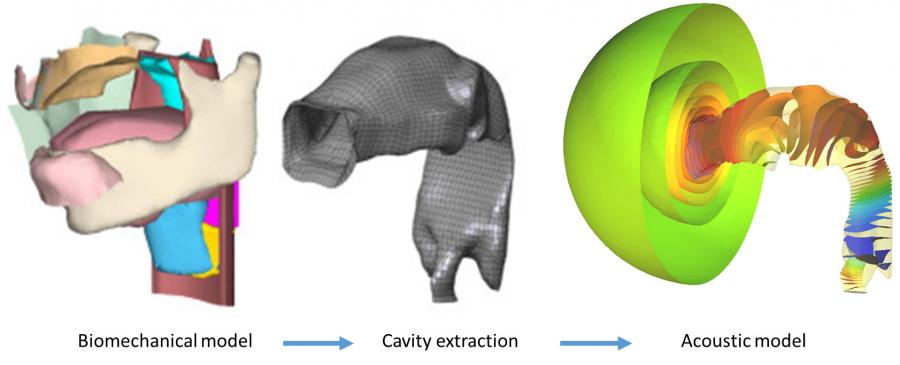Linking a biomechanical model and an acoustic model for the simulation of vowels

When we speak, the vocal cords generate acoustic waves that propagate through the vocal tract and are radiated outwards from the lips. This physical phenomenon can be simulated in a computer, but needs detailed geometries of the vocal tract and an appropriate acoustic model to account for the propagation of acoustic waves.
The researchers from the acoustics area of the GTM, Marc Arnela and Oriol Guasch, have participated in the development of a new way to link the 3D biomechanical model Artisynth with an in-house 3D numerical code for acoustics. The Artisynth biomechanical model can articulate any sound by moving the different articulators of the voice organ, such as the tongue and jaw. However, this model is not able to speak yet. Thanks to the collaboration with two researchers from the Royal Institute of Technology (KTH) in Stockholm, Saeed Dabbaghchian and Olov Engwall, the biomechanical model Artisynth can now generate some sounds like vowels.
The details of this work have been recently published in the International Journal for Numerical Methods in Biomedical Engineering. The article can be freely accessed through the following link: https://doi.org/10.1002/cnm.3159
Saeed Dabbaghchian, Marc Arnela, Olov Engwall and Oriol Guasch (2019), “Reconstruction of Vocal Tract Geometries from Biomechanical Simulations”, International Journal for Numerical Methods in Biomedical Engineering, 35 (2), pp. e3159
This work has been supported by the Agencia Estatal de Investigación (AEI) and FEDER, EU, through project GENIOVOX TEC2016-81107-P.